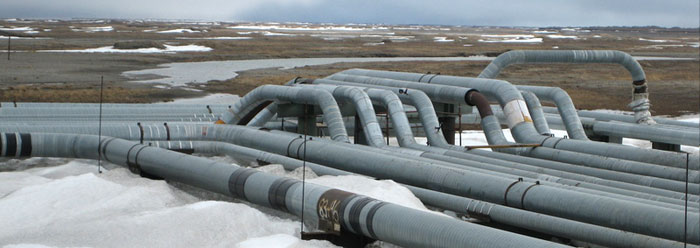Coal, oil, and natural gas are precious earth materials that are used to power many modern human activities. It is commonly believed that these "fossil fuels" formed over millions of years after plant and animal remains were buried and then subjected to tremendous pressures. But how well-grounded is this popular position?
A recent article titled "Natural gas: A modern fuel millions of years in the making" reported that the refined gas used in barbecue grills "marks the last step in a process that began more than 500 million years ago."1
But that's not so. Natural gas can be produced by adding heat and water to brown coal. Underground gas and oil, mixed with water, rise from a heated coal deposit until they are either trapped by an overlying rock formation or emerge at the earth's surface. Converting this coal to liquid or gaseous hydrocarbons does not take much time, nor does the upward migration of such material. So where is the evidence that points to millions of years?
In an exhaustive 2009 book, geologist Andrew Snelling summarized experiments that were performed on coal from Australia's Gippsland Basin. He wrote, "Brown coals from the onshore part of the basin were heated under conditions that simulated accelerated sedimentary burial conditions." This produced "liquid and gaseous hydrocarbons from the contained waxes, and leaf, pollen, and spore cuticles, all in a matter of two to five days."2 These hydrocarbons were identical to those harvested offshore, where they had been trapped above the coals from which they must have originated.
Some coal is being converted to oil and natural gas even now, and it is not taking millions of years.
Snelling also pointed to California's Kettleman Hills, where the natural gas is trapped between Miocene layers and overlying Pleistocene deposits. Both of these are Ice Age deposits that biblical creationists think formed after the Flood roughly 4,500 years ago. But even based on the evolutionary age assignment of 100,000 years for this Pleistocene oil, a 1967 textbook on petroleum concluded, "The time it takes for oil to accumulate into pools may be geologically short, the minimum being measured, possibly, in thousands or even hundreds of years."3
Oil and gas form in days, and they migrate through sedimentary strata to form pools in thousands of years or fewer. Where are the presumed millions of years supposed to fit in this timeline? Articles such as the one listed above present eons-long fossil fuel formation as undisputed fact. But both science and the Bible indicate that oil and gas were not "millions of years in the making," but are only thousands of years old.
Nothing of what is known about oil and gas formation requires or even suggests vast time spans.
References
- Frangou, C. Natural gas: A modern fuel millions of years in the making. Troy Media. Posted on troymedia.com July 27, 2011, accessed August 1, 2011.
- Snelling, A. A. 2009. Earth's Catastrophic Past. Dallas, TX: Institute for Creation Research, 973.
- Levorsen, A. I. 1967. The Geology of Petroleum, 2nd ed. San Francisco, CA: W. H. Freeman and Company, 540, in Snelling, A. A. 2009. Earth's Catastrophic Past. Dallas, TX: Institute for Creation Research, 975-976.
* Mr. Thomas is Science Writer at the Institute for Creation Research.
